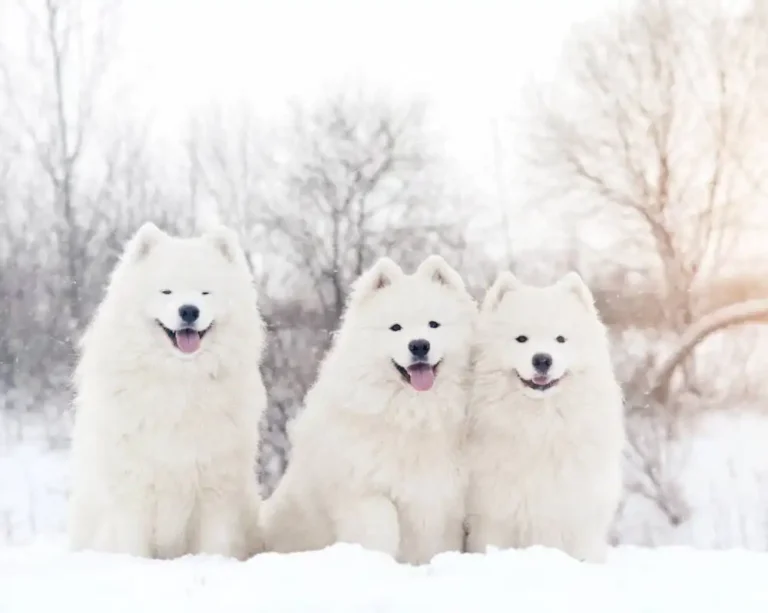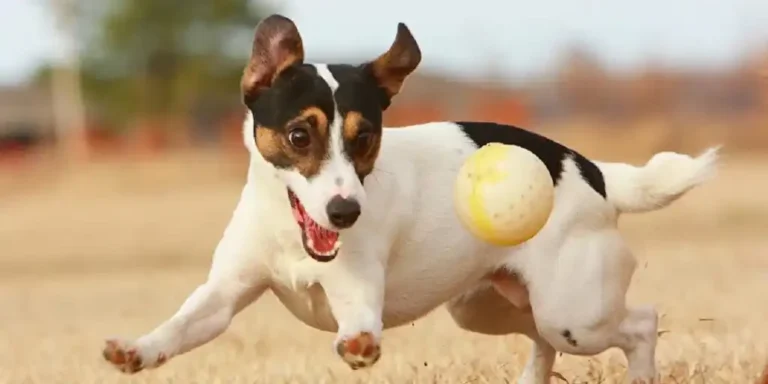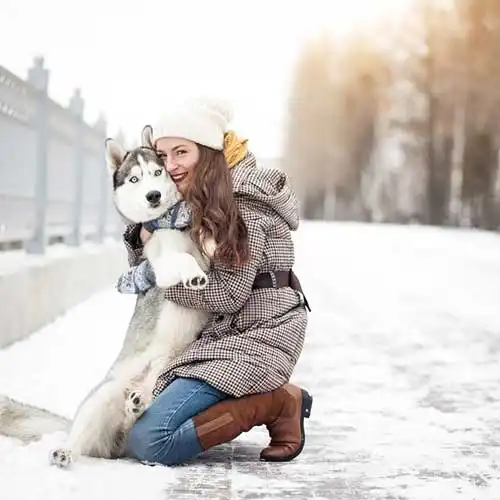How Good Is a Dogs Memory?
Probably, every pet owner is sure that his dog is able to remember him for many years and recognizes him even after a long separation. Is it really so? Are there scientific facts proving the duration of the memory of our four-legged friends? In this article, we will analyze what kind of memory dogs have, how long it takes them to forget their owner, and we will also talk about the features of the brain function of animals.

Owners know from their own experience that dogs have a well-developed memory. After all, pets are able to remember various commands, locations and recognize familiar people. Also, the animal’s brain can record certain moments from the past and associate them with certain emotions and events. However, what are the exact terms of their memory?
Do dogs have a good memory?
Research into the memory of four-legged animals shows that they can remember various things and events. For example, it has been proven that dogs have the ability to mentally record places and routes, using this information for navigation. They can also remember visual and sound signals, in particular commands, associating them with specific actions and rewards in the form of tasty treats or the owner’s praise.
However, scientists are still unclear how exactly pets remember these things. In the future, specialists plan to figure out what kind of memory animals have, what cognitive strategies dogs use to understand and remember events.
Conducting experiments in this area is important not only for people who want to learn more about their pets, but also for more effective training and education of animals in the future. If a person understands how they remember and process information, he will be able to use this data to make training more productive and successful.
So, although quite a bit is already known about dog memory, research is still ongoing. Discoveries in this area could lead to interesting and useful results in the future.

Features of the structure of the dog’s brain
The brain of all mammals has a similar structure. The main difference is the degree of development of its lobes..
The dog brain is different from the human brain:
- The presence of a large number of neurons, responsible for the sense of smell. This allows animals to perfectly remember smells and navigate by them. Humans have 50 times fewer of these neurons.
Fewer convolutions. And also size. In humans it is, of course, larger. - The experiments conducted have proven that the dog’s brain works the same way as the human brain. When a dog remembers something, thinks about something, the same processes are activated in its brain as in humans.
In addition, it has been proven that dogs have several types of memory: associative and episodic. The first is considered more developed.
Associative memory allows pets to connect events, objects, or actions. For example, performing commands with rewards. Dogs can quickly learn commands such as “Sit” or “Lie down” if they are offered tasty food, a toy, or petting for doing these actions. They can also remember places where they found food, and for this reason return there again and again.
In addition, dogs have episodic memory. It is associated with important events. Animals can remember, for example, how they had a negative or positive experience in the past and store it in their minds. Until a certain time, it was believed that only humans had this type of memory. But experiments conducted by Claudia Fugazza proved that a dog’s brain can also record certain events and recall them if necessary. For this, a study was conducted in which dogs were asked to imitate the actions of their handlers, giving them the command “Do it!” For example, a person touched an umbrella with his nose, and the animal then did the same.
Both associative and episodic memory are considered long-term. In addition, pets have short-term memory, which “lasts” no more than two minutes. It is also called real.
Principles of memory
The more emotions accompany an event in the pet’s life, the better it will be remembered – this is a general rule for animals and people. In principle, one nerve cell is enough to record information, but the more neurons are involved in the process, the stronger the memory will be.
Despite these similarities, it is important to remember that the canine brain is still quite different from the human brain, and it is not worth drawing direct parallels between the thought processes of four-legged animals and humans. Therefore, studying the work of the canine brain allows us to better understand the behavior and needs of animals.
The principles of a dog’s memory are based on the functioning and interaction of neurons in the brain. Neurons are cells of the nervous system that are responsible for transmitting and processing information in the form of electrical signals.
The important principles of memory in our pets are:
- Synaptic plasticity. The most important principle is the ability of neurons to change their activity and interact with each other through synapses – contacts between neurons. This allows the dog to remember and learn different things.
- Consolidation. Pets develop memory through a process called consolidation, which involves fixing information in the brain’s neural networks. It most likely occurs during sleep, when data from the past is being processed.
- Associative learning. Dogs are able to associate specific events, sounds or smells with certain consequences or actions. They rely on the ability to associative learning, which allows them to repeat the required actions or avoid negative situations.
- Emotional connection. There is a theory that pets’ memory may be linked to emotional impressions. They may remember people they have interacted with, reacting to them accordingly. Emotions and memory may be interrelated, enhancing the effect of remembering certain events or things.
In general, the principles of canine memory are similar to those of human memory. However, the exact mechanisms and processes are still the subject of research and debate in the scientific community.
What is the length of a dog’s memory?
It has been proven that short-term (real) memory in pets “lasts” no more than two minutes. In addition, there is long-term memory, which helps dogs accumulate memories for many years. Although scientists have not yet named more precise terms. In this case, memories are not erased, but “layered” one on top of another. It is long-term memory that helps pets accumulate experience and record it in their minds. This experience can be both positive and negative.
For example, if the dog did not like getting a vaccination at the veterinary clinic, the next time you go there, he will most likely be nervous and resist going into the doctor’s office. All this happens due to the negative experience received and its recording in long-term memory.
The real type of memory works on a different principle. Events that did not attract the pet’s attention are simply not remembered by it. In two minutes, it will not remember them. For this reason, you should not scold your pet upon returning home if, for example, it has damaged something in your absence. You should focus on this only if the dog was discovered directly in the process. Only then will it be able to understand what the owner is unhappy with.

How long does a dog remember its owner?
Research conducted by specialists proves that our pets have long-term memory and can recall events that happened quite a long time ago. They can also remember people, their faces and voices, and even the smells emanating from them. Thus, associative memory helps dogs remember a person.
For a dog to remember its owner for many years, they must have a strong emotional connection. For example, a dog will remember an owner for a long time with whom it has a lot of positive memories.
It is important to note that various factors such as age, health, level of training, and the degree to which the pet is involved in certain events can influence the process of memorization. Each dog has individual characteristics, so memory, as well as its duration, can vary from one individual to another.
The memory of previous owners may be related to the memorization of smells, sounds, images and emotions that accompanied interactions with them. However, the exact mechanism and extent of animal memory have not yet been fully studied.
In any case, it is important to understand that four-legged animals can experience various emotions and associate them with certain people and events. Therefore, if the owner has a situation where he can no longer take care of the pet, it is important to provide him with decent living conditions and resolve the issue of his well-being and comfort. If the dog is surrounded by love in a new family, he will be able to love another owner no less strongly. Although, most likely, he will remember the first owner for a very long time and recognize him when he meets him.

Amazing Stories
There are many stories in the world that prove that, after a fairly long period of time, dogs can remember their owners. This section provides three such examples from real life.
A Skye Terrier named Greyfriars Bobby lived in Scotland back in the 19th century. When his owner died, the dog spent 14 long years coming to his grave to spend the night there. This dog is considered the most famous among the Scots, and films and books have been made about it.
Another pet living in Italy proved that dogs have a very good memory and remember their owners all their lives. The owner of a dog named Fido died, but he came to meet him at the bus stop for a long time, like Hachiko, believing that his owner would finally arrive.
A monument to a shepherd dog named Kostya was erected in Tolyatti. The dog’s family died in a car accident. But the faithful dog sat on the side of the road for seven long years and watched the passing vehicles. He waited for his owners because he could not forget them.






